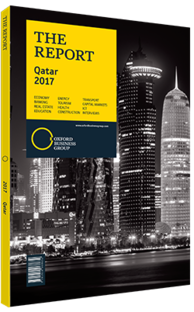New partnership framework at the heart of Qatar's infrastructure investment push
With Qatar increasingly looking to engage the private sector in undertaking national infrastructure projects, efforts are under way to introduce a new legal framework governing public-private partnerships (PPPs) in the country. The proposed PPP law, which aims to further incentivise and mobilise private investment, is currently passing through the final stage of the legislatorial process, with government figures hopeful it will pass into law by early 2018.
Despite the absence of a specific legal framework to date, the government has long worked alongside the private sector in various industry projects. The most developed example of this cooperation is in the oil and gas sector, where state-owned Qatar Petroleum (QP) is participating in a number of long-term joint ventures with foreign players, particularly in gas-to-liquids production. QP’s joint ventures include partnerships with Shell and Sasol Chevron.
Joint Ventures
Another sector in which PPPs are relatively advanced is utilities, where a number of large-scale projects – also using the joint-venture model – are currently under development. For example, the 2500-MW Facility D water and power project, which will also have a desalination capacity of 590,000 cu metres per day, will follow a structure whereby the utilities distributor – in this case Kahramaa – agrees to a fixed-term contract to purchase the power and water offtake from the plant.
The fixed-term contract will cover a period of 25 years and the joint venture will be structured through special purpose company Umm Al Houl Power, which is 70% owned by either the government or government-related entities and 30% owned by K1 Energy, a consortium of the Japanese companies Mitsubishi and Tokyo Electric Power.
The joint-venture structure is a relatively conservative risk-sharing model, and has the advantage – from the government’s perspective – of enabling the state to maintain a majority interest, while also profiting from the expertise of a private sector partner within a more incentivised framework than a simple tendering model. It remains to be seen, then, whether there will be any appetite among government or private partners for PPP models entailing a greater sharing of risk and reward, or if the new legal framework will simply be used to give greater clarity and certainty to the kinds of partnerships already being used.
New Law
Previous attempts to pass specific PPP laws have been made, notably in 2013 when efforts did not move beyond the draft stage. However, in light of the recent decline in oil prices and the resulting impact on government revenues, it is widely anticipated that the current push will result in a concrete outcome. In particular, health care and education are seen as potential areas of expansion under the PPP model, with the 2017 budget foreseeing new investment of QR5.8bn ($1.6bn) in these sectors.
While detailed outlines of the proposed PPP law have not yet been made public, it is expected that the legislation will provide not only a legal basis for drawing up PPP contracts, but also a broader governance and supervisory framework for regulating the activities. According to sources familiar with the process, among the challenges to be addressed – both by the law itself and in the early stages of its implementation – are the establishment of a clear allocation of risk between contracting parties, and an adequate definition of the scope of project costs and return on investment.
Beyond these points, the ultimate success of PPPs in Qatar will rest on the type of projects made available and the appetite of perspective investors. The financing and construction of major PPP infrastructure projects elsewhere in the region has demonstrated that both the capital and expertise exists to service the model. While government officials work to push the legislation into practice, many potential partners are likely waiting with great interest.
You have reached the limit of premium articles you can view for free.
Choose from the options below to purchase print or digital editions of our Reports. You can also purchase a website subscription giving you unlimited access to all of our Reports online for 12 months.
If you have already purchased this Report or have a website subscription, please login to continue.

